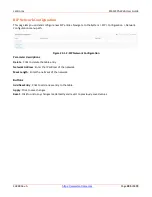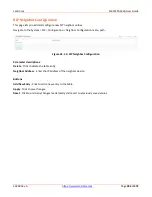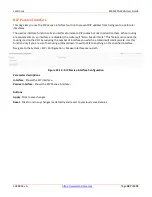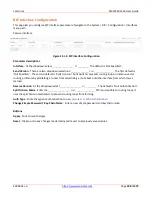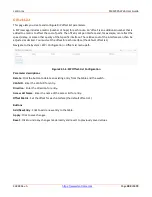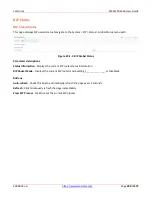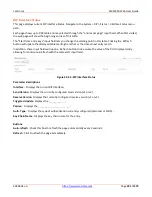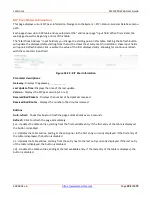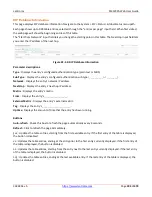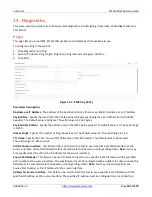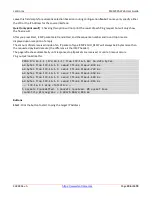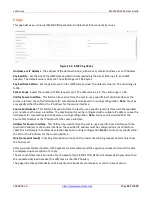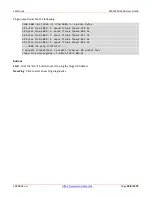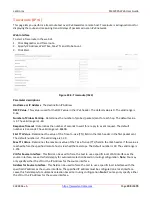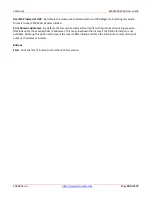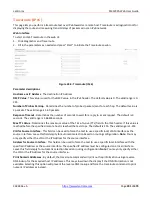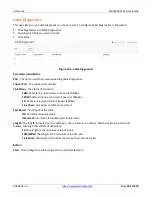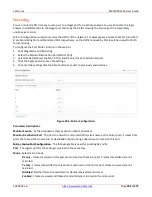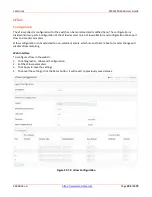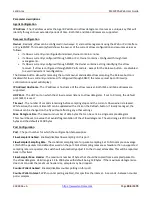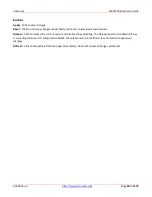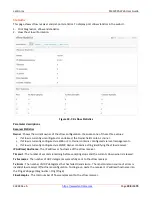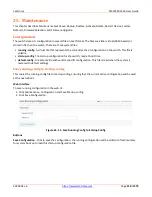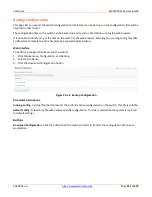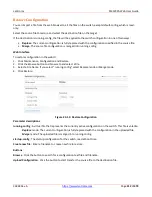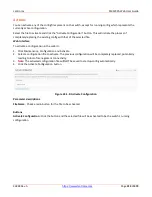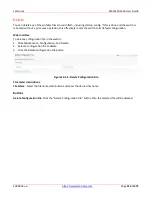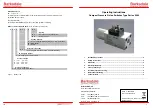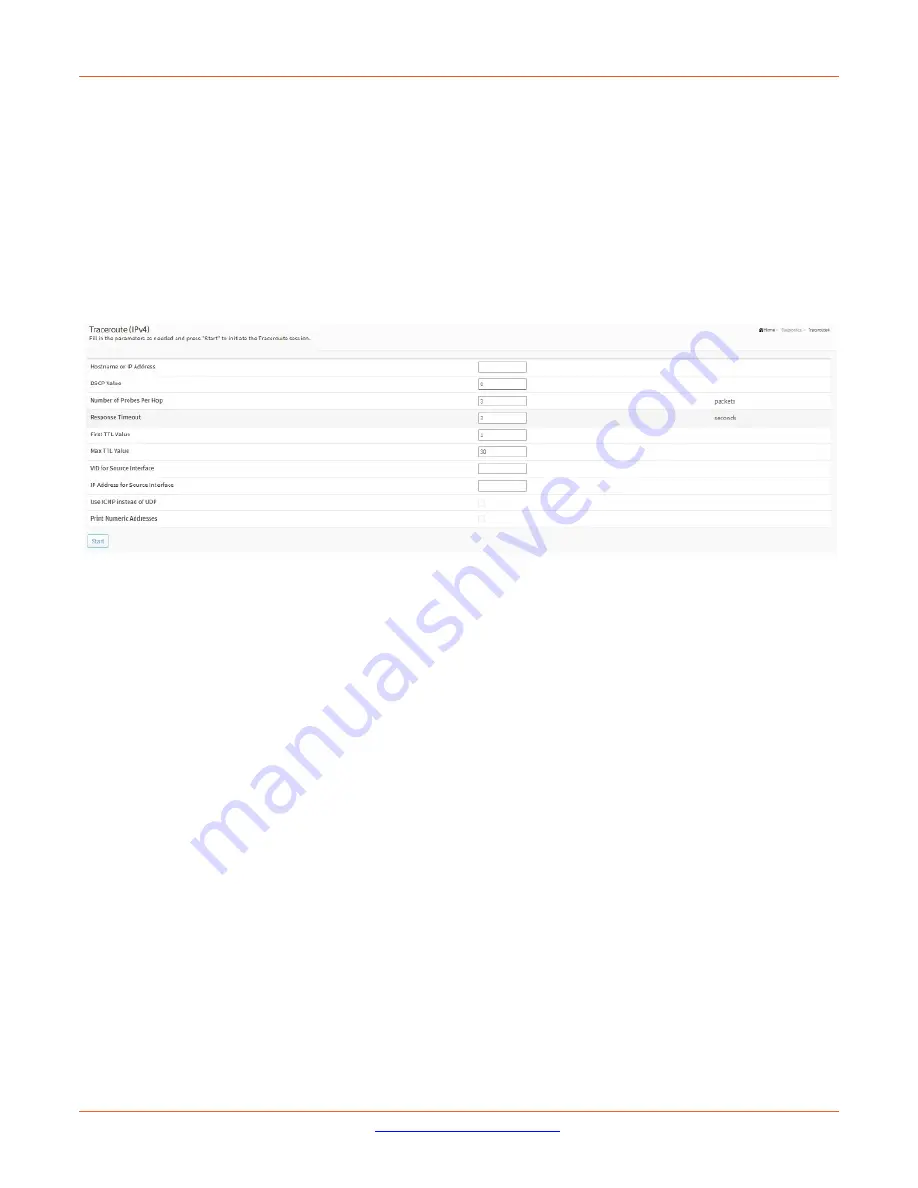
Lantronix
SM12XPA Web User Guide
33848 Rev. A
Page
399
of
473
Traceroute (IPv4)
This page lets you perform a traceroute test over IPv4 towards a remote host. Traceroute is a diagnostic tool for
displaying the route and measuring transit delays of packets across an IPv4 network.
Web Interface
To start a Traceroute in the web UI:
1.
Click Diagnostics and Traceroute.
2.
Specify IP Address, Wait Time, Max TTL and Probe Count.
3.
Click Start.
Figure 23-3: Traceroute (IPv4)
Parameter descriptions
:
Hostname or IP Address
: The destination IP Address.
DSCP Value
: This value is used for the DSCP value in the IPv4 header. The default value is 0. The valid range is
0-63.
Number of Probes Per Hop
: Determines the number of probes (packets) sent for each hop. The default value
is 3. The valid range is 1-60.
Response Timeout
: Determines the number of seconds to wait for a reply to a sent request. The default
number is 3 seconds. The valid range is 1-86400.
First TTL Value
: Determines the value of the Time-To-Live (TTL) field in the IPv4 header in the first packet sent.
The default number is 1. The valid range is 1-30.
Max TTL Value
: Determines the maximum value of the Time-To-Live (TTL) field in the IPv4 header. If this value is
reached before the specified remote host is reached the test stops. The default number is 30. The valid range is
1-255.
VID for Source Interface
: This field can be used to force the test to use a specific local VLAN interface as the
source interface. Leave this field empty for automatic selection based on routing configuration.
Note
: You may
only specify either the VID or the IP Address for the source interface.
Address for Source Interface
: This field can be used to force the test to use a specific local interface with the
specified IP address as the source interface. The specified IP address must be configured on a local interface.
Leave this field empty for automatic selection based on routing configuration.
Note
: You may only specify either
the VID or the IP Address for the source interface.

